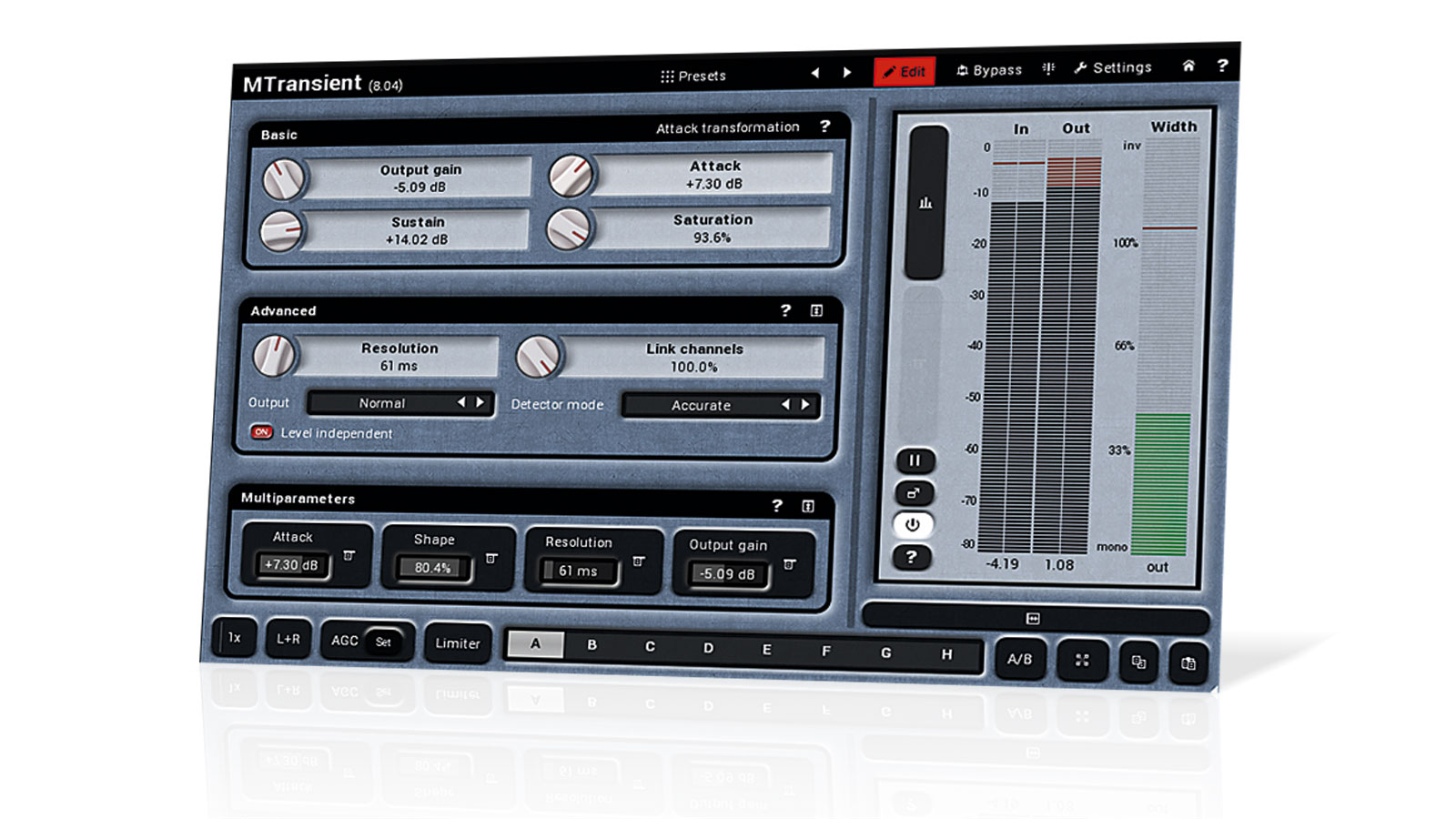MusicRadar Verdict
As simple or complicated as you like, MTransient gives you what you need for precise shaping from transient to tail.
Pros
- +
Flexible editing parameters Sounds great! Easy page for quick results. Solid selection of presets Improved v8 graphics. Good value.
Cons
- -
Detailed parameters won't be necessary for everyone.
MusicRadar's got your back
Four years ago, MeldaProduction released MMultiBandTransient, a powerful transient designer plugin that made good use of their multiband processing engine.
We liked it a lot, but it could be pretty hard on the ol' CPU, so the arrival of a more traditional single-band version certainly warrants attention. Like all Melda plugins, MTransient offers deep editing via its Edit screen, which we'll come back to shortly. But for those after a straightforward 'transient designer' experience, the Easy screen offers five presets: Processor, Shaper, Compressor, Pumping and Detector.
"MTransient offers a far more detailed approach to transient design than most plugins in its field"
Shaper is a particularly good starting point, while the other four showcase MTransient's less obvious capabilities - Detector, for example, outputs just the transients picked up by the detector circuit. All Easy presets link through to the main Edit page using Melda's Multiparameter control system (enabling you to assign multiple parameters to a single control), so you can easily tweak their behaviour if required.
The Edit screen hosts two main parameter panes: Basic and Advanced. Basic comprises Attack, Sustain, Saturation and Output Gain, while Advanced adds Detector Mode (Accurate, Approximated or Hybrid, mainly influencing the sustain component), transient detector Resolution (0-200 ms), stereo Link and Output signal type (Normal, Difference - which is the boosted/cut signal itself - and just the detected Transients). Basic also lets you pop out the Attack Transformation envelope graph, with which you can design your own multipoint curve for the attack stage.
Rounding things off, the bottom toolbar has settings and switches for Upsampling (x1-16), L/R or MS mode, Auto Gain Control (AGC), and an output safety Limiter. The Settings page lets you adjust modulation and automation accuracy (from sample-accurate downwards) and various MIDI controller settings.
A transient thing
Although we're big fans of the simple two-knob approach of most transient shapers, MTransient's additional controls move the concept forward. The transient Resolution parameter is useful, as you can use it to tailor the detection 'window size' very accurately to the length of the transient being processed.
In our testing, for example, we used a slightly longer setting on kick drums than snares, which better suited their attack characteristics. We were then free to use the Attack gain to enhance the transient.
The Edit page's Sustain setting (which adjusts the level of the signal immediately after the attack stage, rather than the later tail) is pretty useful, too. And if the response still needs more tweaks, there's the Attack Transformation graph.
With more sensitive source material, such as acoustic guitar, bass and vocals, this level of flexibility could hinder as much as help, but we found that starting with an Easy preset, then moving onto more detailed parameters if required, worked well, allowing a degree of subtle enhancement not normally associated with transient shapers.
MTransient offers a far more detailed approach to transient design than most plugins in its field, and if you're a tweaker, you'll appreciate its peerless flexibility. Nonetheless, with its Easy presets making light work of the basics, its relevance also extends to those after quick results with minimum input.
Computer Music magazine is the world’s best selling publication dedicated solely to making great music with your Mac or PC computer. Each issue it brings its lucky readers the best in cutting-edge tutorials, need-to-know, expert software reviews and even all the tools you actually need to make great music today, courtesy of our legendary CM Plugin Suite.
“The last thing Billy and I wanted to do was retread and say, ‘Hey, let’s do another Rebel Yell.’ We’ve already done that”: Guitar hero Steve Stevens lifts the lid on the new Billy Idol album
"This $399 item will incur over $578 in additional import charges": Price of Sonicware CyDrums drum machine more than doubles thanks to Trump tariffs
“For guitarists who crave an unrelenting, aggressive tone that stands out in any mix”: The Fortin Meshuggah head is the amp every metal player wants – now you can get its crushing tones in a pedal











